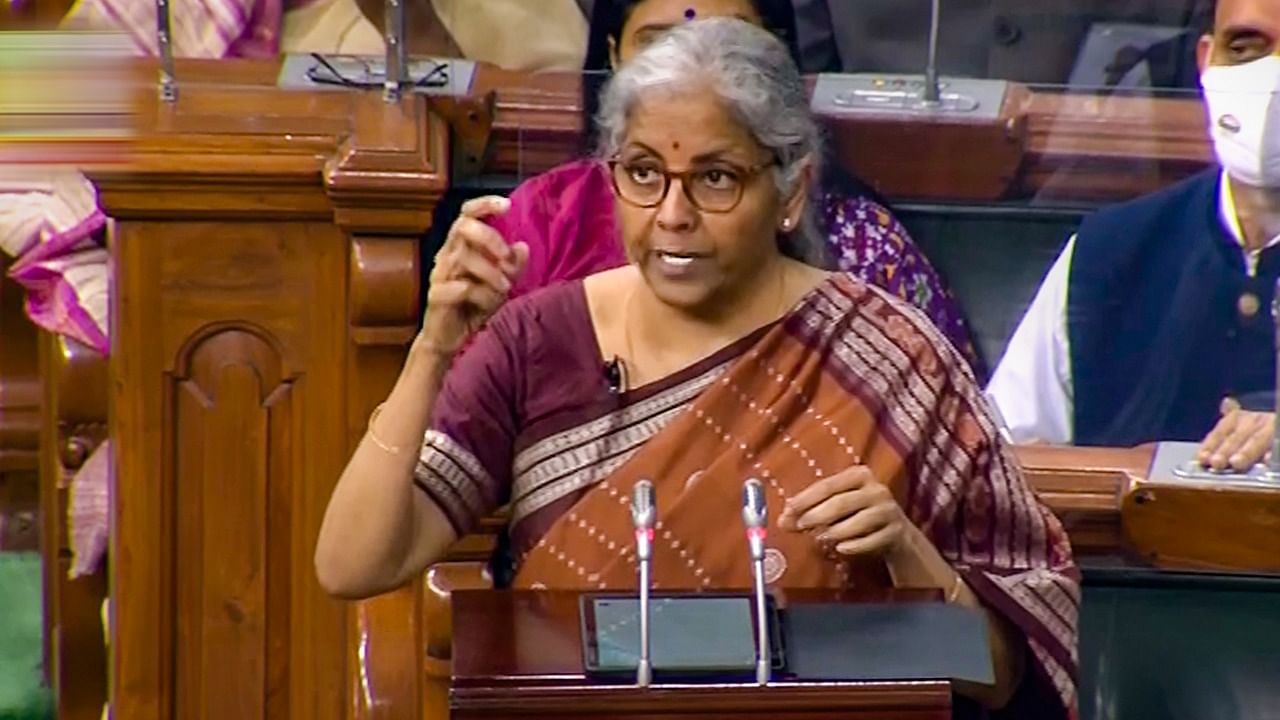
Finance Minister Nirmala Sitharaman on Tuesday announced that Union Budget 2022-23 seeks to lay the foundation and give a blueprint to steer the economy over the 'Amrit Kaal' of the next 25 years from India at 75 to India at 100.
The outlay for capital expenditure in the Union Budget is once again being stepped up sharply by 35.4 per cent from Rs 5.54 lakh crore in the current year to Rs 7.50 lakh crore in 2022-23. This has increased to more than 2.2 times the expenditure of 2019-20. This outlay in 2022-23 will be 2.9 per cent of GDP.
With this investment taken together with the provision made for creation of capital assets through Grants-in-Aid to States, the 'Effective Capital Expenditure' of the Central Government is estimated at Rs 10.68 lakh crore in 2022-23, which will be about 4.1 per cent of the GDP.
As against a total expenditure of Rs 34.83 lakh crore projected in the Budget Estimates 2021-22, the Revised Estimate is Rs 37.70 lakh crore. The Revised Estimate of capital expenditure is Rs 6.03 lakh crore. This includes an amount of Rs 51,971 crore towards settlement of outstanding guaranteed liabilities of Air India and its other sundry commitments.
Coming to the Budget Estimates, the total expenditure in 2022-23 is estimated at Rs 39.45 lakh crore, while the total receipts other than borrowings are estimated at Rs 22.84 lakh crore.
The revised Fiscal Deficit in the current year is estimated at 6.9 per cent of the GDP as against 6.8 per cent projected in the Budget Estimates. The Fiscal Deficit in 2022-23 is estimated at 6.4 per cent of the GDP, which is consistent with the broad path of fiscal consolidation announced last year to reach a fiscal deficit level below 4.5 per cent by 2025-26.
"While setting the fiscal deficit level in 2022-23, I am conscious of the need to nurture growth, through public investment, to become stronger and sustainable", the Finance Minister added.
Sitharaman said the government aims to attain the vision by complementing the macro-economic level growth focus with a micro-economic level all-inclusive welfare focus, promoting digital economy and fintech, technology enabled development, energy transition, and climate action, and relying on virtuous cycle starting from private investment with public capital investment helping to crowd-in private investment.
Sitharaman said this Budget continues to provide impetus for growth. It lays a parallel track of a blueprint for the Amrit Kaal, which is futuristic and inclusive. This will directly benefit our youth, women, farmers, the Scheduled Castes and the Scheduled Tribes. And big public investment for modern infrastructure, readying for India at 100. This shall be guided by PM Gati Shakti and be benefited by the synergy of multi-modal approach, she added.
PM Gati Shakti Master Plan for Expressways will be formulated in 2022-23 to facilitate faster movement of people and goods. The National Highways network will be expanded by 25,000 km in 2022-23. Rs 20,000 crore will be mobilized through innovative ways of financing to complement the public resources.
One hundred PM Gati Shakti Cargo Terminals for multimodal logistics facilities will be developed during the next three years.
Innovative ways of financing and faster implementation will be encouraged for building metro systems of appropriate type at scale. Multimodal connectivity between mass urban transport and railway stations will be facilitated on priority.
Watch the latest DH videos: